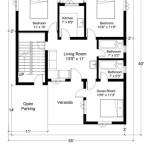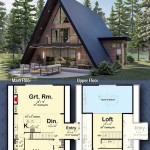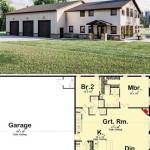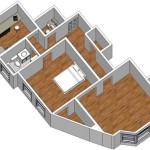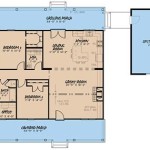How To Draw Up Floor Plans For A House
Creating floor plans is a foundational step in any home construction or renovation project. A well-drafted floor plan serves as a visual representation of a house, showcasing the arrangement of rooms, walls, doors, windows, and other structural elements. These plans are essential for communication among architects, contractors, interior designers, and homeowners, ensuring everyone is aligned on the project's vision and scope. This article outlines a comprehensive guide to drawing up floor plans for a house, covering essential tools, considerations, and steps to help navigate the process effectively.
Before beginning, it is crucial to gather the necessary materials. At a minimum, a person will require measuring tools, such as a tape measure, a laser distance measurer (optional but recommended for large spaces), and a level. Drafting tools are equally important, including graph paper (typically at a scale of 1/4 inch or 1/8 inch per foot), pencils, erasers, a ruler, a set square, and a protractor. For digital drafting, computer-aided design (CAD) software such as AutoCAD, SketchUp, or Revit becomes invaluable. These programs allow for precise measurements, easy revisions, and the creation of 3D models. A notebook will be helpful to jot down pertinent information regarding dimensions and any unique features of the property.
I. Initial Measurements and Site Assessment
Accurate measurements form the bedrock of any successful floor plan. Start by measuring the exterior dimensions of the house. Walk around the perimeter and record the length and width of each wall. Pay close attention to any irregularities, such as bump-outs, alcoves, or angled walls. Record these features with precision. After completing the exterior measurements, move inside the house and begin measuring the interior walls. Measure each room individually, noting the dimensions of walls, doors, and windows. Measure the height of the ceilings in each room. Special attention should be paid to wall thicknesses, which are critical for accurate space calculations and structural considerations.
When measuring, employ a systematic approach. Start from a fixed point, such as a corner, and work your way around the room in a clockwise or counter-clockwise direction. This helps ensure that all measurements are accounted for and that no areas are overlooked. It is advantageous to have a partner assist with the measuring process, particularly for longer walls or awkward spaces. A partner can help hold the tape measure steady and ensure accurate readings.
Besides linear measurements, evaluate the existing conditions of the house. Note the location of existing plumbing fixtures (toilets, sinks, showers), electrical outlets, switches, and lighting fixtures. Similarly, mark the position of heating, ventilation, and air conditioning (HVAC) systems, including vents, registers, and thermostats. These elements will influence the layout and design of the new floor plan, particularly if any plumbing or electrical work is planned. Take photographs of each room, focusing on details such as architectural features, trim, and finishes. These photographs can serve as a valuable reference during the drafting process.
It is helpful to create a rough sketch of the existing floor plan as a guide. This sketch does not need to be perfectly to scale, but it should accurately represent the overall layout of the house and the relative positions of the rooms. As measurements are taken, record them directly onto the sketch, noting the locations of doors, windows, and other important features. This provides a visual reference and can help identify any discrepancies or errors in the measurements.
II. Drafting the Floor Plan
Once all the measurements have been collected and the site assessment is complete, the actual drafting of the floor plan can commence. If drafting by hand, begin by selecting an appropriate scale for the graph paper. A scale of 1/4 inch per foot is generally suitable for smaller houses, while a scale of 1/8 inch per foot may be necessary for larger houses. The scale should allow the entire floor plan to fit on the paper while still providing sufficient detail.
Begin by drawing the exterior walls of the house, using the measurements obtained in the initial step. Ensure that the walls are drawn to scale, following the chosen scale for the graph paper. Use a ruler and set square to ensure that the lines are straight and the corners are square. Once the exterior walls are in place, add the interior walls, again using the measurements and ensuring that they are drawn to scale.
Next, add the doors and windows to the floor plan. Doors are typically represented as an arc showing the direction of the door swing. The width of the door should be accurately represented based on standard door sizes (e.g., 30 inches for interior doors, 36 inches for exterior doors). Windows are typically represented as two or three parallel lines, indicating the window frame and glass. Ensure that the size and placement of the windows are consistent with the actual measurements.
After adding the walls, doors, and windows, include other essential features such as plumbing fixtures, electrical outlets, and HVAC systems. Represent these features using standard symbols, which are readily available online or in architectural drafting guides. The symbols should be placed accurately, based on the measurements and site assessment performed earlier. Label each room with its intended use (e.g., living room, kitchen, bedroom, bathroom). Also, label any other important features, such as closets, staircases, and fireplaces.
For digital drafting, the process is similar, but instead of using graph paper and pencils, CAD software is used. Begin by setting the units of measurement to feet or inches and selecting an appropriate scale. Draw the exterior walls using the line tool, inputting the measurements obtained earlier. Add the interior walls, doors, and windows, using the appropriate tools and commands within the software. CAD software typically includes libraries of symbols for plumbing fixtures, electrical outlets, and HVAC systems, which can be easily inserted into the floor plan.
One of the advantages of using CAD software is the ability to easily revise and modify the floor plan. Walls can be moved, doors and windows can be resized, and rooms can be reconfigured with just a few clicks. CAD software also allows for the creation of multiple layers, which can be used to separate different elements of the floor plan, such as walls, furniture, and electrical wiring. This makes it easier to manage and edit the floor plan.
III. Verification and Refinement
After drafting the initial floor plan, it is important to verify its accuracy and make any necessary refinements. One way to verify the accuracy is to compare the floor plan to the original measurements and site assessment notes. Check that all dimensions are correct and that the positions of doors, windows, and other features are accurately represented. It is also helpful to walk through the actual house with the floor plan in hand, comparing the plan to the real-world conditions. This can help identify any discrepancies or omissions that were missed during the initial measurements.
Once the floor plan has been verified, make any necessary refinements. This may involve adjusting the positions of walls, doors, or windows, or reconfiguring the layout of rooms. Consider the flow of traffic through the house and ensure that the layout is functional and efficient. Think about the placement of furniture and appliances and ensure that there is sufficient space for these items. It may be helpful to create multiple iterations of the floor plan, experimenting with different layouts and configurations.
When refining the floor plan, consider the accessibility needs of the occupants. Ensure that doorways are wide enough for wheelchairs or walkers and that there are no obstacles that could impede movement. Pay attention to the height of countertops and sinks and ensure that they are accessible to people of all ages and abilities. Also, consider the lighting and ventilation in each room and ensure that there is adequate natural light and airflow.
For digital drafting, CAD software offers a variety of tools for refining the floor plan. These tools include the ability to stretch, trim, and extend lines, as well as the ability to rotate, mirror, and scale objects. The software also allows for the creation of annotations and dimensions, which can be used to label and document the floor plan. It is a good practice to dimension all walls, doors, windows, and other features on the floor plan, providing clear and accurate information for contractors and builders.
Once the floor plan has been refined and verified, it is ready for presentation to architects, contractors, and other stakeholders. The floor plan should be clear, concise, and easy to understand. It should accurately represent the layout of the house and the positions of all important features. The floor plan should be accompanied by a detailed set of specifications, which outlines the materials, finishes, and construction methods to be used. A well-drafted floor plan is the foundation for a successful construction or renovation project, ensuring that everyone is on the same page and that the project is completed to the highest standards.

Floor Plan Creator And Designer Free Easy App

Draw Floor Plans With The Roomsketcher App

Floor Plans Types Symbols Examples

Floor Plans Learn How To Design And Plan

Creating The Perfect Floor Plan Quarry View Building Group

Make Your Own Blueprint How To Draw Floor Plans

How To Draw A Floor Plan Top Mistakes Avoid Foyr

Floor Plans How To Design The Perfect Layout Cherished Bliss

Floor Plans Learn How To Design And Plan

Tips For Selecting The Right Floor Plan Your Home Sater Design Collection
Related Posts

